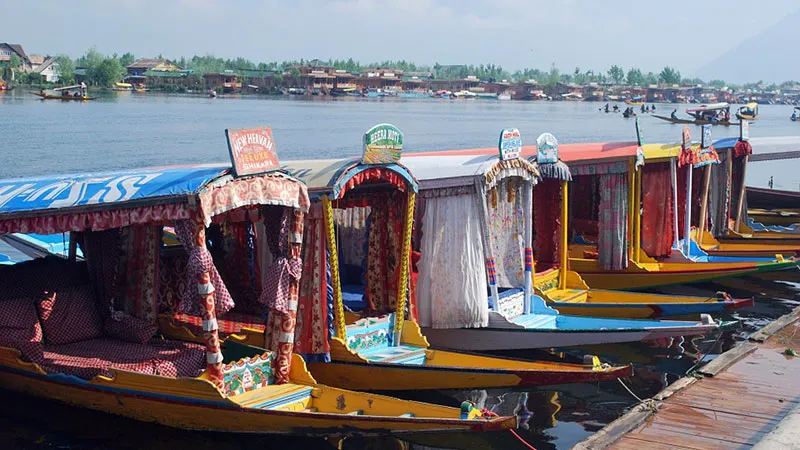At a recent conference held in New Delhi, Union information technology minister Ravi Shankar Prasad announced the Centre’s goal of using the Internet to deliver government services to rural parts of Jammu and Kashmir. The irony of the event was not lost on protesting conference participants: As the minister spoke, the Kashmir Valley witnessed the 108th day of Internet restrictions imposed following the < class="aBn" tabindex="0" data-term="goog_1989534813">< class="aQJ">8 July killing of Hizbul Mujahideen commander Burhan Wani. This contradictory approach—of harnessing the Internet’s promise while simultaneously restricting its availability—is unsustainable and indicative of the Indian state’s unpreparedness to deal with a digitised Kashmir. The Valley is adopting a new normal in which Kashmiris are increasingly linked to the world of the Web. Unless New Delhi takes pre-emptive measures, this trend towards mass Internet penetration could radically transform the landscape in favour of global jihadist groups and ideologies.
When Burhan Wani joined the Hizbul Mujahideen in 2011, roughly 3% of Jammu and Kashmir’s population had ready access to the Internet. By the time he was killed < class="aBn" tabindex="0" data-term="goog_1989534814">< class="aQJ">five years later, the Telecom Regulatory Authority of India classified more than 27% of the state’s residents as Internet users. Wani rode this initial wave of Internet penetration to make an impressive impact. Along with his associates in south Kashmir, he rebranded the Hizbul Mujahideen’s violent campaign to give it a deceptively indigenous appearance, and made militancy seem uncharacteristically democratic: You no longer had to be Syed Salahuddin or Hafiz Saeed to have your picture seen and message heard by millions of people.
More generally, Wani was able to demonstrate to disgruntled Kashmiris that the Internet as a medium welcomes their discontent. In the near term, Wani’s example will likely encourage tech-savvy militant entrepreneurs to follow in his footsteps and seek celebrity status by associating themselves with locally established militant outfits. In the longer term, however, Internet penetration could mature to promote violent religious ideologies over the militant nationalistic ones currently in vogue.
Since the early 1990s, a handful of leaders have monopolised the separatist space, relying on the vernacular press to dictate what people believe, when they close their shops, and how readily they jeopardise their educational prospects for a life of militancy or stone pelting. In a contained environment of top-down information flows, separatist leaders have more or less ensured that disaffection with New Delhi translates into one of their two endorsed outcomes: commitment to azadi, or support for Kashmir’s merger with Pakistan. All of this changes with Internet penetration. Once connectivity pervades Kashmiri households, the interests of men like Syed Ali Shah Geelani, Mirwaiz Umar Farooq, Shabir Ahmad Shah and Yasin Malik will have to compete with an entire universe of alternative pull factors.
The Valley’s separatist leaders have already lost legitimacy among a section of Kashmiris, who argue that the Hurriyat men pretend to represent the Kashmiri people while serving only themselves. Indeed, most former militants interviewed by this author believe separatists are opportunistic “double agents”, lining their pockets in the cosy space between New Delhi and Islamabad’s corrupting tendencies. Though these former combatants acknowledge that separatist leaders currently retain the capacity to mobilize thousands of followers, they have no doubt that support for Hurriyat leaders is diminishing steadily. Continued Internet penetration will likely precipitate this breakdown of established power structures. As separatists lose their monopoly over the realm of discontent, the latter stands to become increasingly permeable to foreign ideologies—including those of Al-Qaeda and the Islamic State—that have thus far struggled to gain currency in Kashmir.
The ability of heretofore unwelcome ideologies to find a receptive audience in the Valley will also depend on the persistence of what one may reasonably call omnidirectional disaffection. Over the years, Islamabad has lost favour with many Kashmiris for derailing what began as a struggle for azadi. Hurriyat leaders may await a similar fate as a growing mass of Kashmiris lose faith in their performance as “representatives”.
But the accounts of former militants suggest New Delhi should not expect to benefit from this growing dislike for its traditional foes. While these men initially befriended Pakistan because it was India’s enemy, their subsequent disillusionment with Islamabad has not translated into reduced animosity towards the Indian state. Instead, these individuals have come to exhibit omnidirectional disaffection, simultaneously opposing all involved parties: India, Pakistan, as well as the separatist camp. Because they perceive an absence of allies in their immediate environment, young men harbouring such disaffection could seek proximate shelter in religion, before anchoring themselves—via the Internet—to violent ideologies flourishing farther afield.
In times of crisis, a reactive New Delhi has sought to contain the Internet’s disruptive potential by blocking social media platforms and suspending Internet access altogether. As the Valley’s population becomes increasingly reliant on the Web, however, turning off the tap will not remain an option. Instead, the Indian state ought to focus on the more worthwhile task of addressing deep-seated Kashmiri grievances, for the latter alone can keep mass Internet penetration in the Valley from being a truly wonderful thing.
This commentary originally appeared in Live Mint.
The views expressed above belong to the author(s). ORF research and analyses now available on Telegram! Click here to access our curated content — blogs, longforms and interviews.




 PREV
PREV


